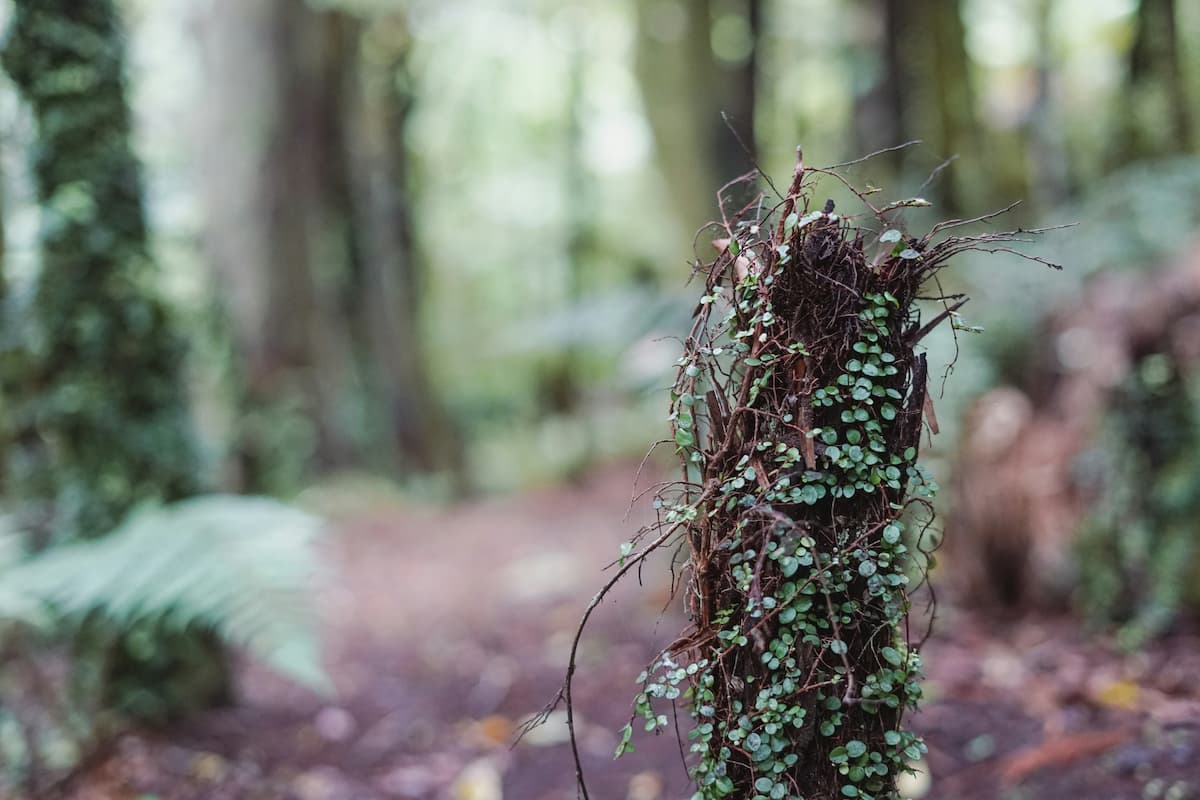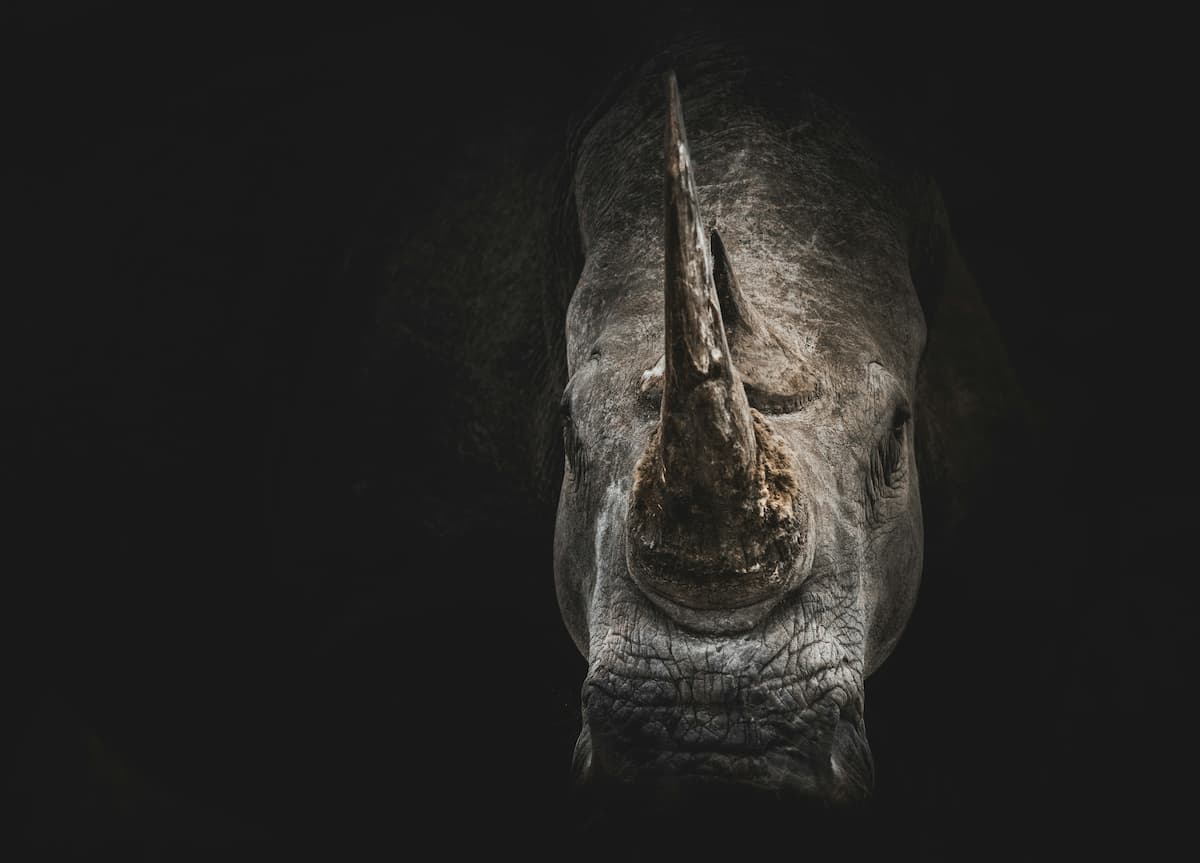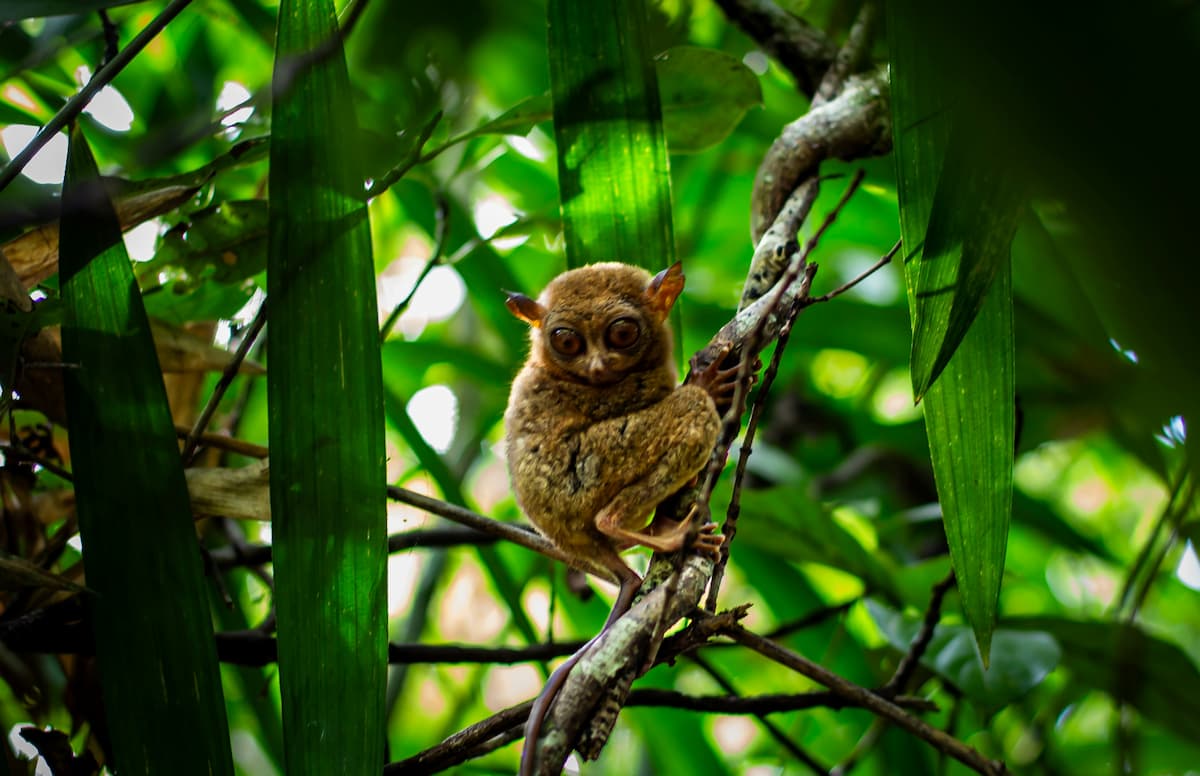
Watch short for this article (5 slides)
Amazon Under Stress: The Deepening Impact of Drought on Earth's Richest Ecosystem
The Amazon rainforest, often called the "lungs of the planet," is far more than a vast carbon sink; it's an unparalleled cradle of biodiversity, teeming with millions of species of plants, insects, fish, amphibians, reptiles, birds, and mammals. This intricate web of life, evolved over millennia under relatively stable, humid conditions, is now facing an escalating threat: increasingly frequent and severe droughts. Driven by a combination of global climate change and regional deforestation, these dry periods are pushing the rainforest's resilience to its limits, impacting not just the trees themselves but the staggering variety of life that depends on them. Understanding the profound ways drought affects Amazonian biodiversity is critical to grasping the stakes and formulating effective conservation strategies.

Photo by Phill Brown on Unsplash
The Amazon's Vital Roles: Why Drought Impacts Reverberate Globally
Before diving into the impacts, it's crucial to recognize the Amazon's significance:
- Biodiversity Hotspot: Home to an estimated 10% of all known species on Earth, with countless more likely undiscovered. Its complexity provides ecosystem services vital for the entire planet.
- Climate Regulation: The Amazon stores vast amounts of carbon in its vegetation and soils. It also influences regional and even global weather patterns through **evapotranspiration** – the process where trees release massive amounts of water vapor into the atmosphere, contributing to rainfall patterns far afield (often termed "flying rivers").
- Indigenous Territories: Home to hundreds of distinct Indigenous groups whose cultures and livelihoods are intrinsically linked to the forest's health.
Disruptions to this system, such as those caused by severe drought, have consequences that extend far beyond the Amazon basin itself.
Drivers of Amazonian Drought: A Complex Mix of Climate Change and Deforestation
While droughts are a natural part of climate variability (influenced by phenomena like the El Niño-Southern Oscillation - ENSO), their increasing frequency and intensity in the Amazon are strongly linked to anthropogenic factors:
- Global Climate Change: Rising global temperatures, driven by greenhouse gas emissions, alter large-scale atmospheric circulation patterns. This can lead to shifts in the position of the Intertropical Convergence Zone (ITCZ), reduced moisture transport into the Amazon basin from the Atlantic, and overall warmer conditions that increase evaporation.
- Deforestation and Land Use Change: Replacing forests with agriculture (cattle pasture, soy fields) or infrastructure significantly reduces evapotranspiration. Fewer trees releasing moisture locally means less recycled rainfall within the basin itself, exacerbating dryness, particularly during dry seasons or ENSO events. Deforestation essentially weakens the Amazon's ability to generate its own rain.
- Synergistic Effects: Climate change and deforestation often interact, creating a dangerous feedback loop where warmer, drier conditions increase fire risk, leading to more forest loss, which further reduces moisture recycling and worsens drought.
Cascading Consequences: How Drought Undermines Biodiversity

Photo by Geranimo on Unsplash
Drought impacts ripple through the Amazon ecosystem in numerous, interconnected ways:
1. Direct Physiological Stress and Mortality
- Plants (Especially Trees): Water scarcity puts immense stress on trees.
- Hydraulic Failure: During severe drought, the tension in the water column within a tree's xylem (water transport tissue) can become too great, causing air bubbles (embolisms) to form, breaking the water transport chain and potentially leading to branch dieback or whole-tree mortality.
- Carbon Starvation: To conserve water, trees close their stomata (leaf pores), reducing water loss but also limiting CO₂ uptake needed for photosynthesis. Prolonged stomatal closure can lead to 'carbon starvation' as the tree consumes its energy reserves faster than it can replenish them.
- Vulnerability: Large, canopy-dominant trees are often surprisingly vulnerable due to the long distances water must travel. Thin-barked species common in the rainforest are also less protected from heat and desiccation.
- Animals:
- Dehydration & Heat Stress: Reduced availability of drinking water sources directly impacts animals. Higher temperatures during droughts add heat stress.
- Habitat Specific Needs: Amphibians, with their permeable skin, are highly susceptible to drying conditions. Fish become concentrated in shrinking pools, leading to oxygen depletion and easier predation.
2. Habitat Degradation and Loss
- Shrinking Aquatic Habitats: Rivers, streams, lakes, and seasonally flooded forests (like *várzea* and *igapó*) shrink or dry up, drastically reducing habitat for aquatic species (fish, river dolphins, manatees, caimans, giant otters) and semi-aquatic species.
- Forest Structure Changes: Widespread tree mortality alters forest structure, reducing canopy cover, changing light penetration, and affecting microclimates on the forest floor. This impacts species adapted to specific canopy layers or shaded understory conditions.
3. Disruption of Food Webs
- Reduced Primary Productivity: Drought limits plant growth, flowering, and fruiting. This reduces food availability for herbivores, frugivores (fruit-eaters), and nectarivores (nectar-eaters).
- Cascading Effects: Shortages at the base of the food web impact populations higher up. Fewer fruits affect monkeys, birds, and peccaries. Declines in herbivore populations impact predators like jaguars and harpy eagles. Reduced fish populations severely impact fish-eating species like otters and certain birds.
- Pollination and Seed Dispersal: Reduced flowering and fruiting disrupt vital ecological processes reliant on animals for pollination and seed dispersal, hindering forest regeneration.
4. Increased Fire Risk and Severity
- Fuel Accumulation: Drought causes trees to shed leaves and branches, creating abundant dry fuel on the forest floor. Dead trees add larger fuel loads.
- Fire Spread: Under normal conditions, the humid Amazon rainforest is relatively fire-resistant. During severe droughts, however, the forest becomes highly flammable. Fires, often started by human activities (land clearing, escaped agricultural burns), can spread rapidly and burn with greater intensity.
- Impact: Fires cause direct mortality of plants and animals, destroy vast tracts of habitat, release stored carbon, and further degrade the forest's ability to retain moisture, creating a positive feedback loop that increases future drought and fire vulnerability. Many Amazonian trees are not adapted to survive fire.
Spotlight on Vulnerable Species: Who Suffers Most?

Photo by Bernd 📷 Dittrich on Unsplash
While drought affects the entire ecosystem, certain species or groups are particularly vulnerable:
| Species/Group | Primary Drought-Related Threats | IUCN Status (Example Species) | Why They Are Vulnerable |
|---|---|---|---|
| Amazon River Dolphin (Boto) | Lower river levels reducing habitat, isolating populations, concentrating prey initially but leading to scarcity later, increased boat strike risk in shallower channels. | Endangered (IUCN Red List) | Obligate aquatic mammal requiring sufficient water depth and connectivity. |
| Giant Otter | Shrinking rivers/lakes reduce habitat and concentrate fish prey (temporarily beneficial, then detrimental), increasing competition/conflict. | Endangered | Semi-aquatic apex predator reliant on healthy fish populations and connected waterways. |
| Large Canopy Trees (e.g., Brazil Nut Tree) | Hydraulic failure, carbon starvation, increased susceptibility to pests/disease, reduced seed production. | Vulnerable (Brazil Nut Tree) | High water demand due to large size; critical role as habitat structure and food source (keystone species). |
| Harpy Eagle | Loss of large emergent trees needed for nesting sites due to drought-induced mortality or fire. Potential decline in prey populations. | Near Threatened | Requires specific, large, stable trees for nesting; apex predator sensitive to food web disruptions. |
| Amphibians (Frogs, Salamanders) | Desiccation due to permeable skin, loss of breeding pools and moist microhabitats. | Many species Threatened or Data Deficient | Highly dependent on moisture and specific environmental conditions. |
| Specialist Birds (e.g., Antbirds) | Changes in forest understory microclimate, decline in specific insect prey associated with shaded, humid conditions. | Varies by species | Adapted to specific microhabitats or food sources highly sensitive to drought conditions. |
The Specter of a Tipping Point: Savanna-fication
Perhaps the most alarming long-term risk is that intensifying droughts, exacerbated by deforestation and fire, could push large parts of the Amazon rainforest past an ecological **tipping point**, triggering a transition towards a drier, savanna-like state. This concept, discussed by researchers like Lovejoy and Nobre, involves self-reinforcing feedback loops:
- Less rainfall leads to more tree mortality and increased fire risk.
- More fires and fewer trees lead to reduced evapotranspiration.
- Reduced evapotranspiration leads to even less regional rainfall, further stressing the remaining forest.
If this cycle progresses beyond a critical threshold, the forest may lose its ability to generate sufficient rainfall to sustain itself, leading to large-scale ecosystem collapse. This "savanna-fication" would result in catastrophic biodiversity loss and the release of hundreds of billions of tons of stored carbon, dramatically accelerating global climate change.
Urgent Action Needed: Mitigation and Conservation
Protecting Amazonian biodiversity from escalating drought requires a multi-pronged strategy operating at different scales:
- Global Climate Action: The most critical factor is aggressively reducing global greenhouse gas emissions to limit further warming and stabilize climate patterns. This requires fulfilling and strengthening commitments under the Paris Agreement.
- Halting Deforestation and Forest Degradation: Implementing and enforcing strong policies to end illegal deforestation, supporting sustainable land-use alternatives (like agroforestry), recognizing and strengthening Indigenous land rights (Indigenous territories often show lower deforestation rates), and reforming supply chains to eliminate deforestation links.
- Expanding Protected Areas: Designating and effectively managing large, interconnected protected areas and Indigenous territories provides refugia for species and helps maintain ecosystem integrity.
- Reforestation and Restoration: Implementing ecologically sound reforestation projects using diverse native species, particularly in degraded areas and buffer zones, can help restore ecosystem function and connectivity over time. Focusing on drought-resilient species may be necessary.
- Sustainable Resource Management: Promoting sustainable forestry, agriculture, and fishing practices within and around the Amazon basin.
- Fire Prevention and Management: Investing in monitoring, early warning systems, and community-based fire brigades to prevent human-caused ignitions and manage fires when they occur, especially during high-risk drought periods.
- Research and Monitoring: Continued investment in research to better understand species' drought tolerance, identify vulnerable areas, monitor ecosystem health (using satellite data and field studies), and assess the effectiveness of conservation strategies is crucial.
Organizations like the WWF, Rainforest Trust, and numerous local and international groups are working on these fronts, but greater political will and funding are essential.
Conclusion: Defending the Heart of Global Biodiversity
The increasing frequency and severity of droughts in the Amazon represent a profound threat to the richest biodiversity on Earth and the stability of the global climate system. Driven by climate change and deforestation, these dry periods trigger cascading impacts, from direct physiological stress and habitat loss to food web collapse and devastating wildfires, pushing the ecosystem closer to a potential tipping point. Protecting the Amazon requires immediate, concerted action: slashing global emissions, halting deforestation, empowering local communities and Indigenous peoples, investing in restoration, and expanding protected areas. The fate of millions of species, and indeed the health of our planet, depends on our commitment to safeguarding this vital ecosystem from drying out.